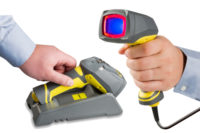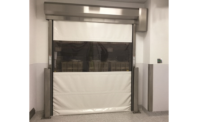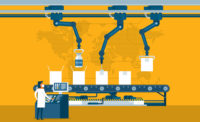As COVID-19 reshapes the international manufacturing landscape, food and beverage companies are looking at ways to optimize their production efficiencies. Striving to maximize resources and provide products in the safest way, many manufacturers are simultaneously seeking ways to improve the sustainability of their operations, including their use of inspection systems.
The pandemic underscores the interconnectedness of the world and the link between health, safety and sustainability. Those priorities are indeed important to those who buy and consume foods too. In fact, according to market research by Nielsen, 81% of consumers say that companies should help improve the environment.
Staying competitive during challenging times is not easy. Although an X-ray machine is a considerable new capital cost, there can be even higher costs associated with food safety and quality issues caused by physical contaminants and with noncompliance with food safety regulations. To prevent such losses and position manufacturers for future success, Eagle Product Inspection has continued to develop and improve inspection technologies and software.
For example, small and mid-sized companies, as well as large manufacturers looking to standardize their equipment can reap many benefits from the recently introduced EPX100, a smaller-footprint, low-energy X-ray system for packaged products that provides superior contaminant detection and weight verification with improved statistical data and visibility. The new Eagle QuadView Short, also with a more compact footprint, is designed for X-ray inspection of jars and bottles with four-view coverage for glass-in-glass contaminant detection. The updated Eagle Pack 400 HC uses a next-generation detector to inspect fresh chicken and portioned nuggets for foreign body contaminants and bone fragments.
In addition to containment detection and quality checks, these machines address inefficiencies that often lead to costly downtime. “Now is the time for manufacturers to identify areas that are causing loss,” says Christy Draus, marketing manager at Eagle Product Inspection.
Advanced X-ray systems also can better detect physical contaminants, even in difficult-to-read products, to reduce the amount of false rejects during food production and processing. False rejects happen on the individual or batch level when “good” product is rejected if deemed to be contaminated or unusable. If a manufacturer isn’t confident or can’t confirm via accurate inspection methods that the item or batch is safe, s/he won’t take the risk of keeping that product as it is.
In addition to correctly identifying foreign material contaminants, inspection systems can simultaneously conduct important quality checks, like weight, fill level and component count, and determine if foreign materials have affected the proper package seal. By using a system like Eagle’s EPX100-S that performs both safety and quality inspection, a manufacturer can accurately inspect the product the first time and prevent loss and giveaway.
If the decision has been made to invest in a new X-ray system, a company can take further steps to assess which machine is best for their operation. Eagle works closely with companies to determine the true probability of detection for potential contaminants across their product lines, based on different variables, packaging and processes. “Determining the true probability of detection gives companies a degree of confidence that variables have been considered and examined. This also provides an accurate indication of a machine’s expected performance over time on their line,” Draus explains.
Another important step is to work toward calculating the total cost of ownership (TCO) of the new equipment, from the initial cost of buying, installing and starting the system, as well as the cost of running machinery year over year.” Performance is a crucial consideration in determining TCO. A high-performing, efficient X-ray system that is reliable over time and that can improve product integrity, quality and safety, will lead to the highest value of ownership,” Draus says.
To learn more about the features and benefits of X-ray systems that can protect a brand in a challenging marketplace, including new inspection technologies and software, visit eaglepi.com.
As pioneers in X-ray inspection technology, Eagle Product Inspection is enhancing the physical contamination detection and quality inspection capabilities of food and pharmaceutical manufacturers worldwide. Our food inspection solutions cover a wide range of industries including dairy, confectionery, bakery, fruits and vegetables, poultry, red meat, snacks, ready meals for packaged products, bulk, carton boxes, pouches, tall rigid containers, trays and unpackaged products. eaglepi.com




